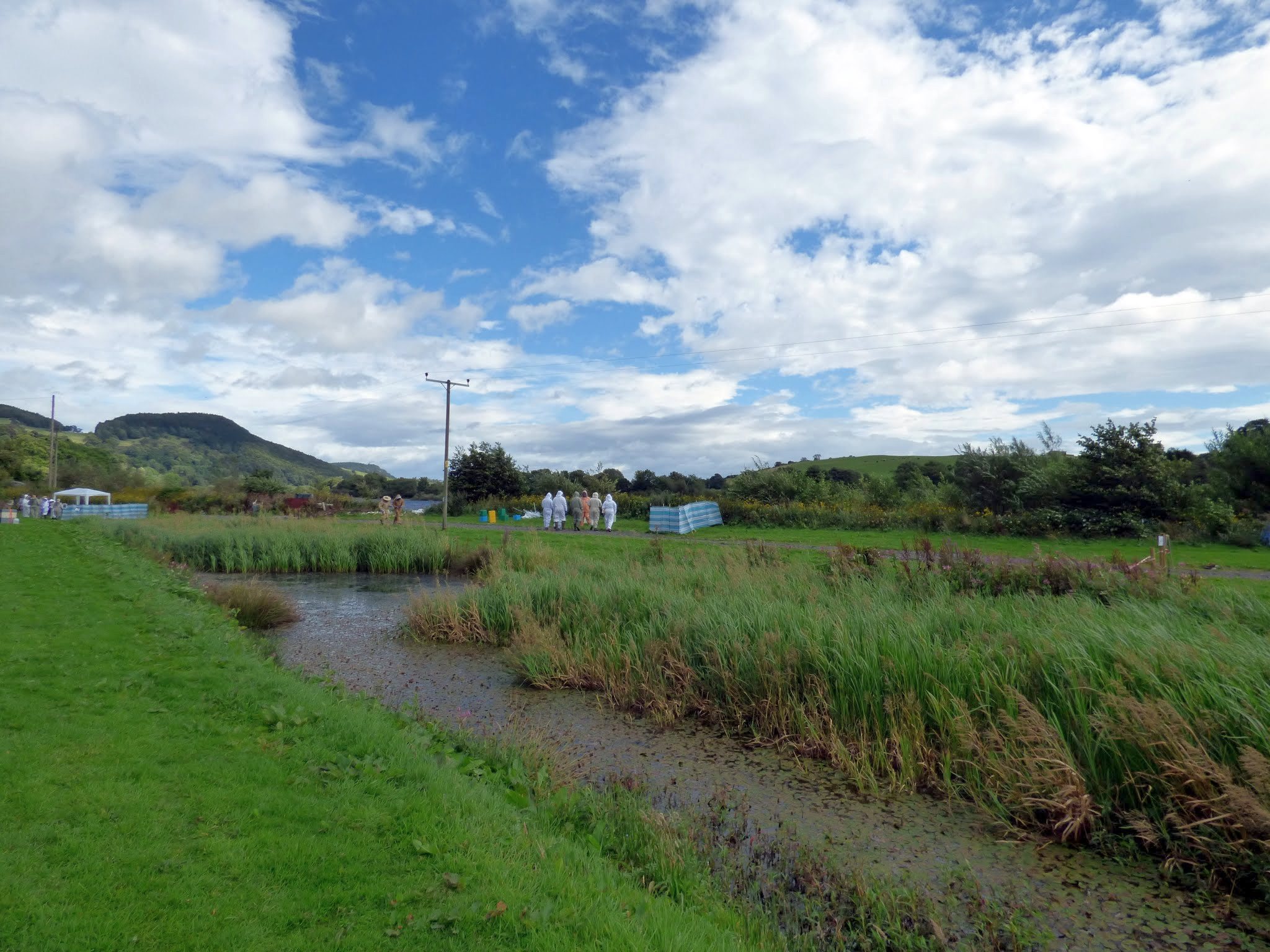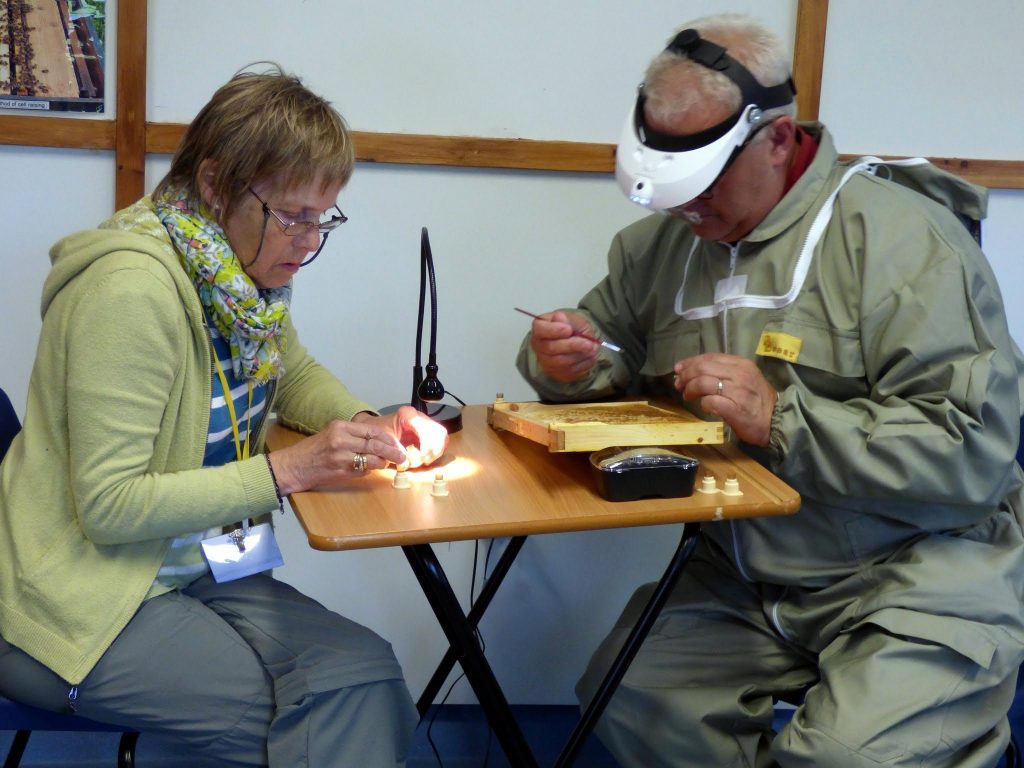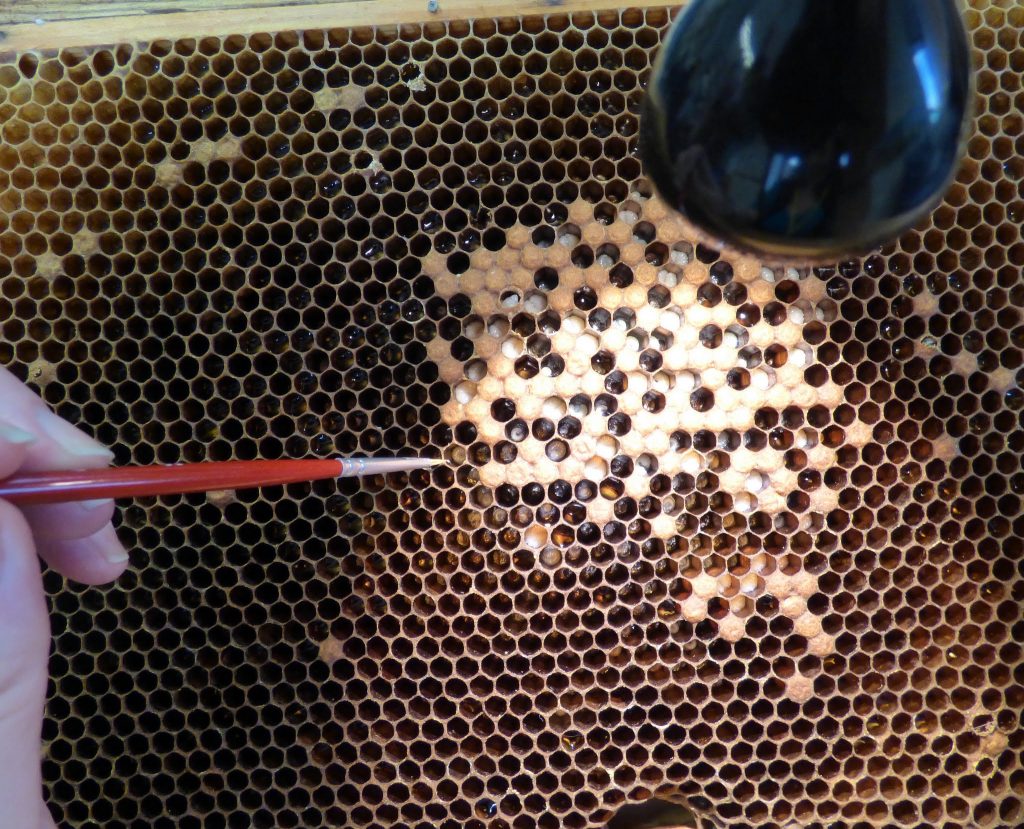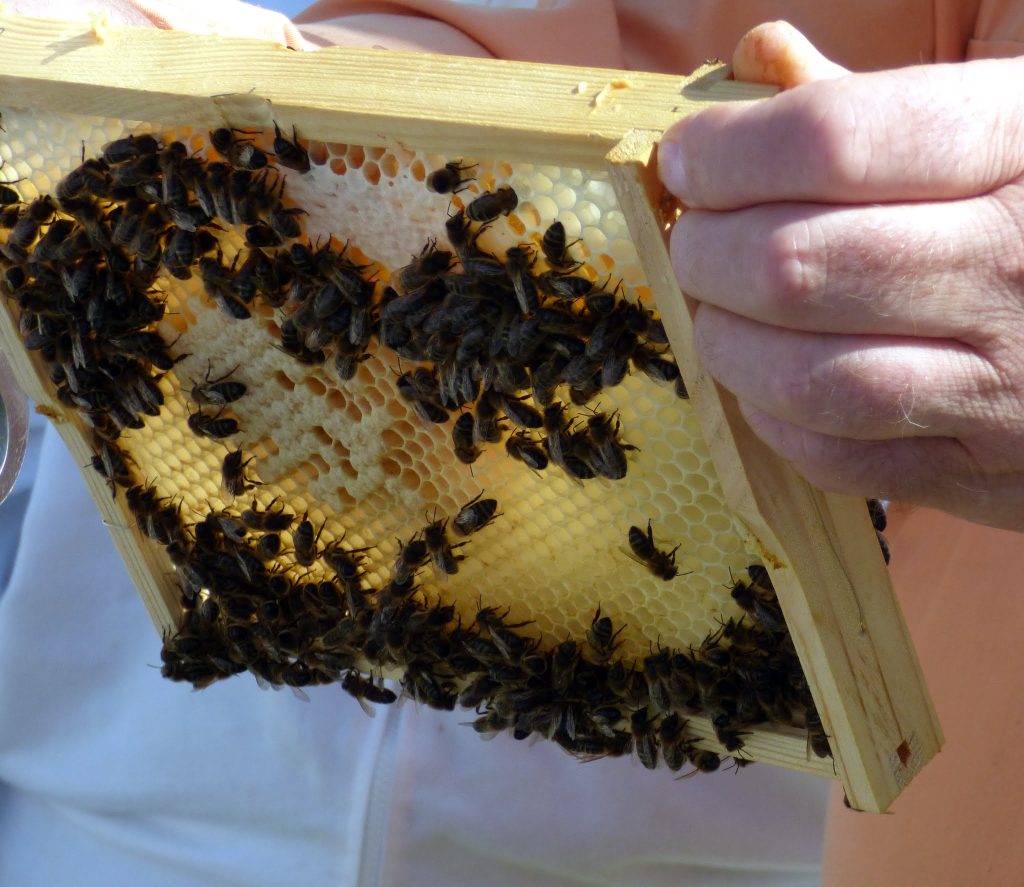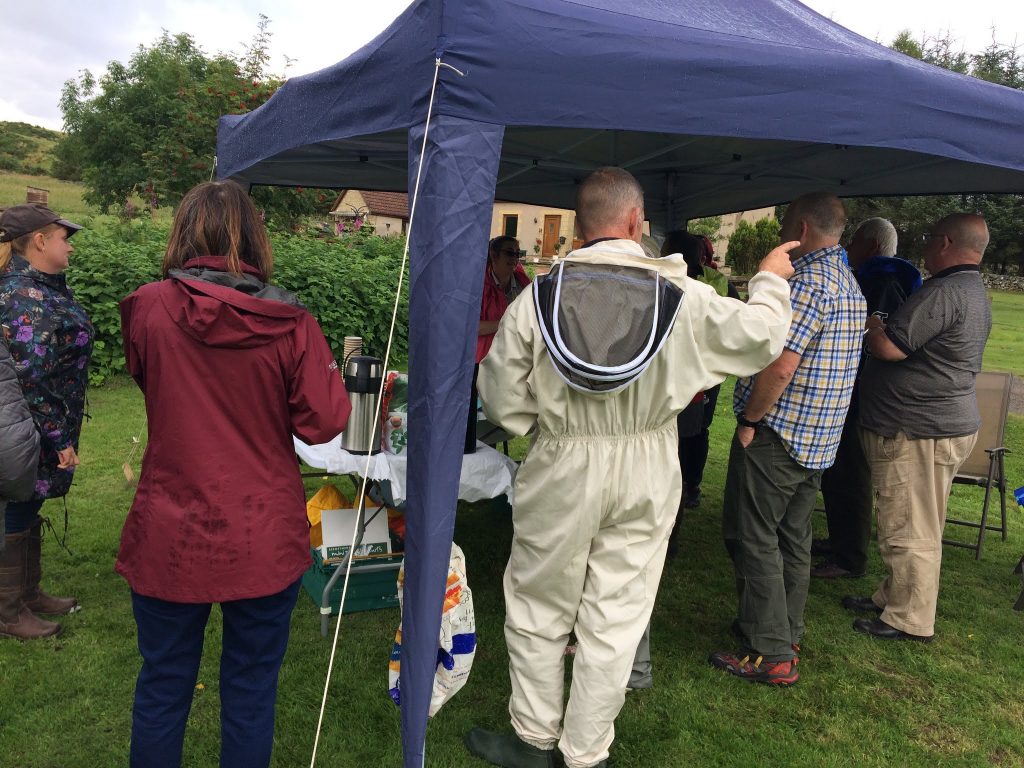by Gavin Ramsay
Forty-six beekeepers, mostly SNHBS members, came to Perth for the queen-rearing workshop organised by the Ochils Breeding Group over two days in August. After a classroom session going through the principles of selection, queen rearing, queen mating and subsequent management, the attendees divided into three groups for the three practical sessions occupying much of the day. Jeff took them through the grafting session, showing the right stage of larva to use and the methods employed to move the larvae into cups for cell raising. Participants worked in pairs to ensure that everyone had a chance to try grafting for themselves, many using magnifying headbands to help the careful handling of larvae of the right stage. John took his groups through everything to do with mating nuclei, the types available with their good and less good points, making them up with young bees and their management. I showed finding and handling queens and demonstrated harvesting queens from mating nuclei after the new queens were established. Everyone was encouraged to try their hand at lifting young workers and handling them as if they were queens. The yellow-spotted workers can still be seen in the MiniPluses now!
Although I had been reluctant to have gazebos erected for the day, their value was clear on the first of the workshops as torrential rain forced us under them to continue beekeeping. However on the second day wind was the bigger issue and one of the gazebos collapsed, but despite that the bees were well behaved throughout.
The dismal weather in the run-up to both events was affecting our ability to generate queen cells. However, several colonies were dedicated to the generation of queen cells and all participants who wanted one were eventually supplied with either a ripe cell or a freshly emerged virgin. We understand that several made it home safely tucked into cleavages and other parts of the body to keep them safe and warm! Reports since have been encouraging with at least a few of these queens now laying and being prepared for the winter.
Everyone seemed pleased with the organisation and the content of the event. Tracy and Karen deserve special praise for their professional approach to managing the day and for delivering an excellent buffet lunch in a lovely spot on the banks of the Tay.
Many of the participants took up our offer of a visit to our queen mating site afterwards where further questions were answered and everyone had the chance, after refreshments, of seeing the mating station in action. Both the presenters and the participants enjoyed their day with excellent feedback given at the end of the day.
[Photos: Dawn Rigby]

